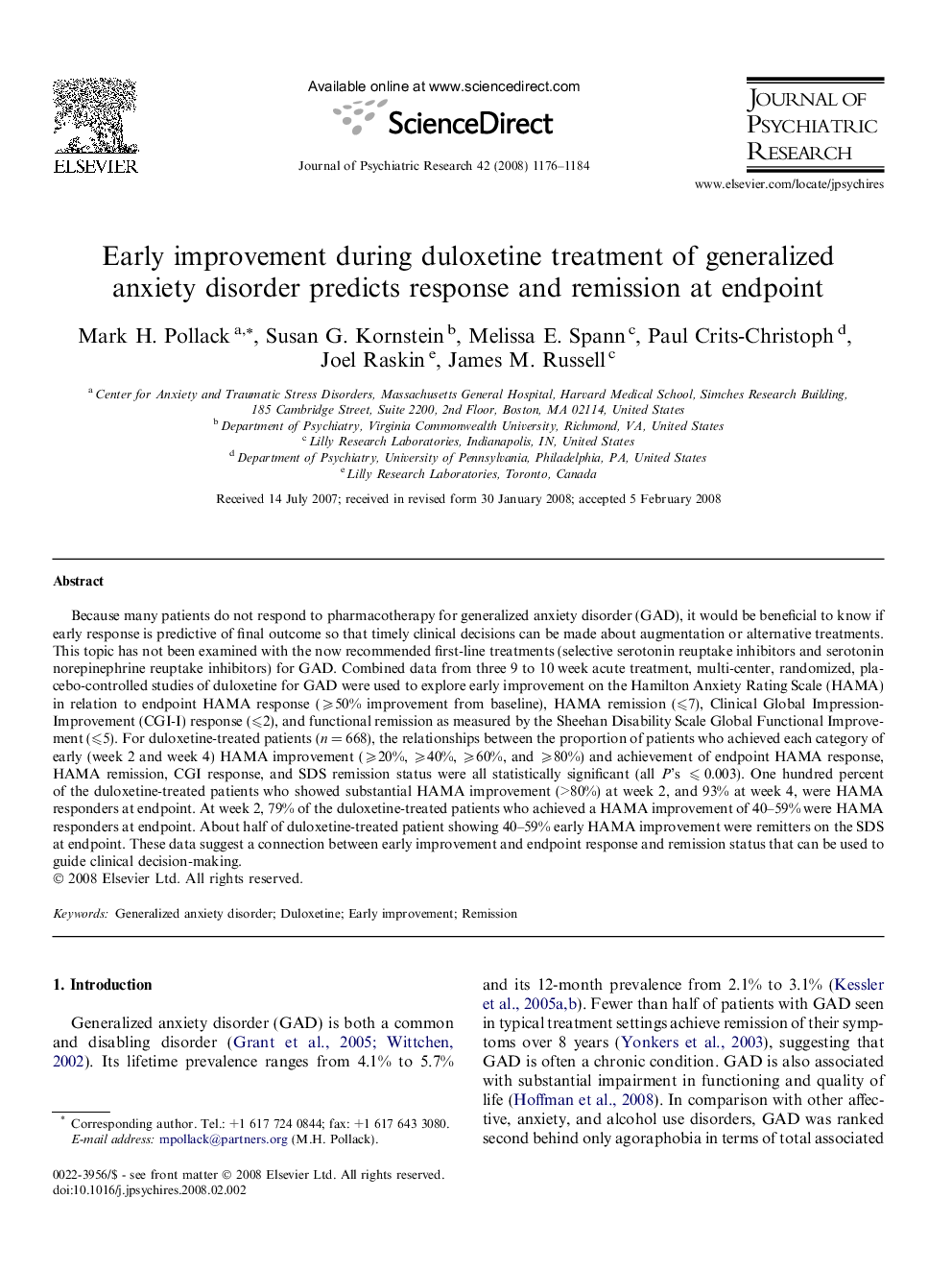| Article ID | Journal | Published Year | Pages | File Type |
|---|---|---|---|---|
| 328020 | Journal of Psychiatric Research | 2008 | 9 Pages |
Because many patients do not respond to pharmacotherapy for generalized anxiety disorder (GAD), it would be beneficial to know if early response is predictive of final outcome so that timely clinical decisions can be made about augmentation or alternative treatments. This topic has not been examined with the now recommended first-line treatments (selective serotonin reuptake inhibitors and serotonin norepinephrine reuptake inhibitors) for GAD. Combined data from three 9 to 10 week acute treatment, multi-center, randomized, placebo-controlled studies of duloxetine for GAD were used to explore early improvement on the Hamilton Anxiety Rating Scale (HAMA) in relation to endpoint HAMA response (⩾50% improvement from baseline), HAMA remission (⩽7), Clinical Global Impression-Improvement (CGI-I) response (⩽2), and functional remission as measured by the Sheehan Disability Scale Global Functional Improvement (⩽5). For duloxetine-treated patients (n = 668), the relationships between the proportion of patients who achieved each category of early (week 2 and week 4) HAMA improvement (⩾20%, ⩾40%, ⩾60%, and ⩾80%) and achievement of endpoint HAMA response, HAMA remission, CGI response, and SDS remission status were all statistically significant (all P’s ⩽ 0.003). One hundred percent of the duloxetine-treated patients who showed substantial HAMA improvement (>80%) at week 2, and 93% at week 4, were HAMA responders at endpoint. At week 2, 79% of the duloxetine-treated patients who achieved a HAMA improvement of 40–59% were HAMA responders at endpoint. About half of duloxetine-treated patient showing 40–59% early HAMA improvement were remitters on the SDS at endpoint. These data suggest a connection between early improvement and endpoint response and remission status that can be used to guide clinical decision-making.
